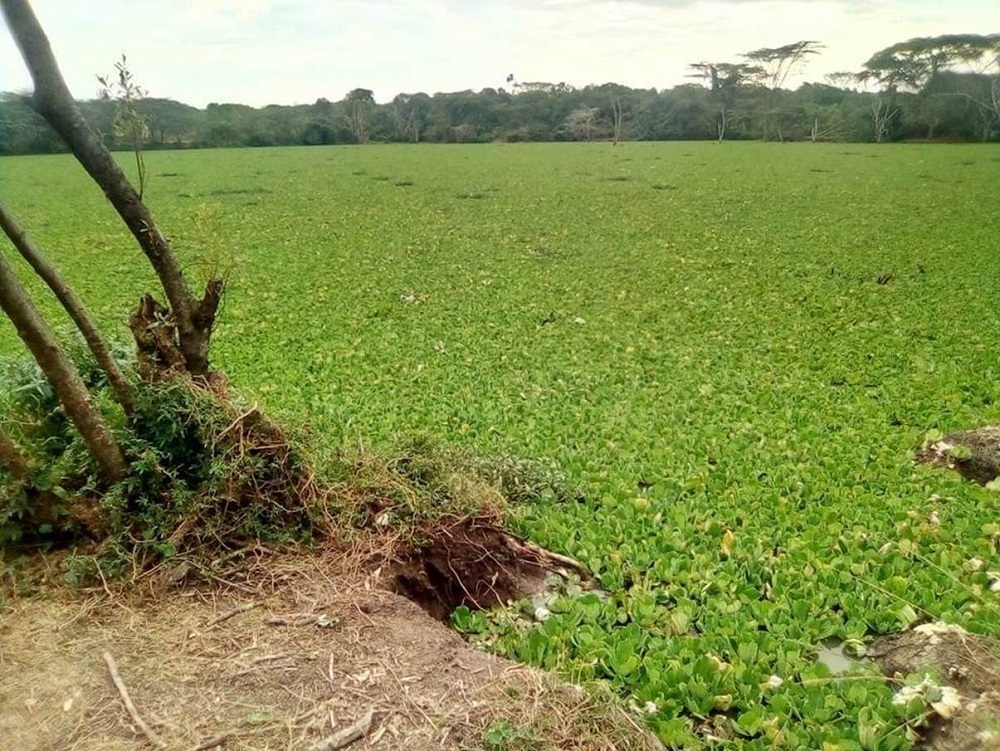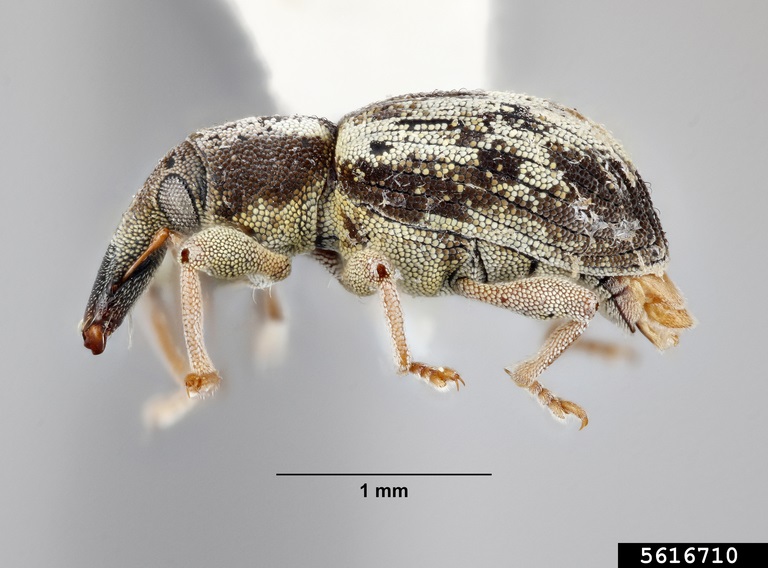
The tiny water lettuce weevil (Neohydronomus affinis) is having a mighty impact curbing invasive water lettuce (Pistia stratiotes L.), which has been threatening the rich biodiversity of Kenya’s Maasai-Mara ecosystem.
Water lettuce was originally introduced to many parts of the world, including Kenya, for ornamental reasons and most experts are of the opinion that it is native to parts of Brazil.
However, water lettuce – also known locally as ‘yungi’ – can have a detrimental effect on fish nesting sites and mortality among fish and micro-invertebrates. It can also contribute to increased rates of siltation and reduced water flow.
Responded to call
CABI, in June/July 2022, responded to a call from residents of the world-famous Naretoi Conservancy to help rid its watercourses of water lettuce and protect its ecosystem from any further damage.
The Naretoi Conservancy is part of a pioneering rewilding project where in 2013, the closest intensive pivot irrigation farm on the Mara upstream of the Maasai-Mara National Reserve, was taken out of farming and put into conservation and eco-tourism.
Meanwhile, the Maasai-Mara ecosystem is home to 25% of Kenya’s wildlife. It hosts more than 95 mammal species besides being a recognised Important Bird Area (IBA) with 550 bird species.
Release of weevils
Dr Arne Witt, Invasives Coordinator, South, facilitated the introduction and release of 850 water lettuce weevils – which were provided by Rhodes University in Grahamstown, South Africa – in infested dams to try and sustainably control the mats of water lettuce.
The work, which sees the host-specific beetle effectively eat the water lettuce and in so doing reduce its coverage and spread, was conducted in partnership with staff from the Naretoi Conservancy, Kenya Plant Health Inspectorate Service (KEPHIS) and the Kenya Wildlife Service (KWS).
Now, Dr Witt can report that within just six months the water lettuce weevils have eaten away at the dense mats of water lettuce – causing a dense mat in one dam alone to collapse and reduce its coverage by almost 100%.
Dr Witt believes the water lettuce weevil is paying dividends as a cost-effective biological control agent that could also be introduced out to other invaded water bodies in Kenya.

Cost-effective weapon
Dr Witt said, “The water lettuce weevil is proving to be an effective ‘weapon’ against the scourge of invasive water lettuce and I’m convinced it can be utilised effectively elsewhere in the Maasai-Mara ecosystem and Kenya in general.
“Not only that but the weevil is a very cost-effective solution to the problem with each release costing considerably less compared to trying to clear the dense mats using manual labour which is largely ineffective and can run into thousands of dollars annually. The latter of which also runs the risk of meeting hippos and crocodiles on the watercourses.”
A paper, published in Biocontrol Science and Technology, by Malueke et at, found for example, that the biological control of four aquatic weeds (Pista stratiotes, Salvinia molesta, Azolla filiculoides and Myriophyllum aquaticum) in South Africa was significantly cheaper than chemical control.
The estimated cost of the biological control of the four aquatic weeds was about ZAR7.8 million whereas the estimated cost of chemical control to achieve the same impact varied between ZAR150 million and ZAR1 billion.

Invasives threat continues
Dr Witt added that progress made by conservationists for the benefit of communities that are actively involved in managing eco-tourism sustainably can be severely hindered by invasive plants such as water lettuce as well as water hyacinth, salvinia and azolla.
CABI applied to KEPHIS to re-import the water lettuce weevil more than two years ago. After a thorough review of the application, and confirmation that the weevil would not pose a threat to any crops or native plant species the relevant authorities granted permission for importation. The conditional release was then endorsed by KWS.
CABI has now released or re-distributed at least 10 weed Classical Biological Control agents in Africa in the last 15 years or so.
Additional information
Main image: Before the water lettuce weevil was released this dam was heavily infested with invasive water lettuce which has a range of detrimental effects on biodiversity including the degradation of fish nesting sites and mortality among fish and macro-invertebrates (Credit: Will Jones).
Other relevant news story
See also the news story ‘CABI answers call to tackle invasive water lettuce in Kenya’s Maasai-Mara ecosystem.’
2 Comments
Leave a Reply
Related News & Blogs
Tackling a cactus menace with sustainable biological control in Kenya’s Naibunga Community Conservancy
In the heart of Kenya’s Naibunga Community Conservancy, a growing ecological threat is taking root — Opuntia engelmannii. This species of cactus has become a major invasive plant, impacting livestock health, grazing lands, and human wellbeing. The Naib…
24 January 2025





Congratulations Arne on another example of the powerful, beneficial impact of classical biological control.
Thanks Denis
Indeed, if only most donors could see the benefit of biocontrol we would be able to contribute significantly more to improving livelihoods and biodiversity conservation globally. Also recently had incredible success with Cyrtobagous controlling a salvina invasion on Lukanga Swamps in Zambia – thousands of people have benefitted.